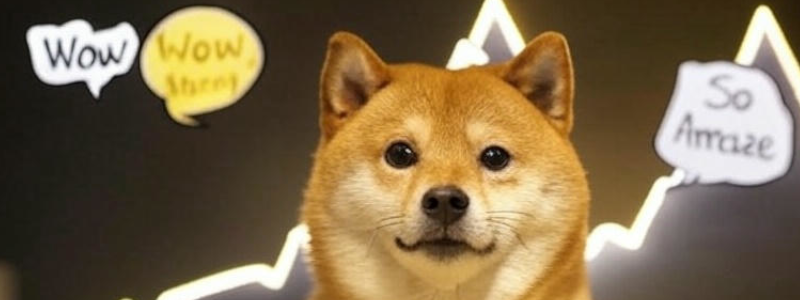Published on March 11, 2025
In the world of cryptocurrencies, few stories are as quirky and captivating as that of Dogecoin (DOGE). What started as a joke has grown into one of the most recognized digital currencies, boasting a market capitalization in the billions. But how did a simple dog meme pave this path? In this blog post, we dive into the origin story of Dogecoin, its unexpected rise, and the reasons it remains relevant in 2025.
The Birth of a Meme: The Origin of Dogecoin
Dogecoin was created on December 6, 2013, by software developers Billy Markus and Jackson Palmer. The idea sprang from a spontaneous whim: Palmer, then a marketing expert at Adobe, tweeted jokingly about a fictional currency called "Dogecoin," inspired by the viral "Doge" meme. This meme featured a Shiba Inu dog named Kabosu, surrounded by broken English in Comic Sans font, like "Wow," "Much Money," or "So Amaze." The tweet was a satirical nod to the growing flood of Bitcoin clones saturating the market at the time.
Billy Markus, a programmer from Portland, stumbled upon the tweet and decided to turn the jest into reality. Within hours, he modified Bitcoin’s code, incorporated the Doge meme as its mascot, and launched Dogecoin online. Initially, it was a gag—a parody of the often overly serious crypto world. Little did they know, their fun project would soon take the world by storm.
The Unexpected Rise: From Joke to Currency
Dogecoin launched with a simple premise: it aimed to be a fun, accessible alternative to Bitcoin. Technically, it’s based on Litecoin, a Bitcoin offshoot, and uses the Scrypt algorithm for mining. Unlike Bitcoin’s 21 million coin cap, Dogecoin was designed with an inflationary model: there’s no fixed limit, and about 5 billion new DOGE are added annually. This made it perfect for small transactions and tipping—a concept that quickly gained traction.
Within weeks of its debut, the community began using Dogecoin for charitable causes. In 2014, Dogecoin fans raised funds to send the Jamaican bobsled team to the Winter Olympics and supported projects like building wells in Africa. These efforts gave Dogecoin a positive identity: it wasn’t just a meme, but a currency with heart.
The first major price surge came years later. In 2021, fueled by the broader crypto frenzy and endorsements from celebrities like Elon Musk, Dogecoin’s value skyrocketed. Musk, dubbing himself the "Dogefather," tweeted regularly about DOGE, pushing its price to over €0.60 at times—a rise of thousands of percent. In May 2021, Dogecoin hit a market cap of over $90 billion, climbing into the top 5 cryptocurrencies.

The Highs and Lows: A Volatile Ride
Despite its success, Dogecoin remained a product of hype. After its 2021 peak, a steep decline followed as the crypto market crashed. Yet even in bear markets, DOGE held up remarkably well. The "Doge Army"—its affectionate community—stayed loyal, and the currency found new use cases, such as payments for select Tesla products or tips on platforms like Reddit and Twitter.
One reason for its enduring relevance is Dogecoin’s simplicity. While many cryptocurrencies tout complex technologies and promises, DOGE keeps it straightforward: it’s fast, cheap, and accessible to everyone. This makes it appealing to newcomers who don’t want to grapple with smart contracts or Layer-2 solutions.
Why Dogecoin Still Matters
- The Power of Community: The Dogecoin community is one of the strongest in crypto. It not only popularized the coin but carried it through tough times. This loyalty sets DOGE apart from many projects that fade after their initial hype.
- Celebrity Backing: Elon Musk remains a key driver. His tweets and comments can sway the price in minutes. Other celebrities, like Snoop Dogg and Mark Cuban, have also spotlighted Dogecoin, boosting its visibility.
- The Meme’s Symbolic Power: The Doge meme is more than just an image—it represents a culture of humor and levity that feels refreshing in the often complex crypto world. This identity has given Dogecoin a unique, hard-to-replicate brand.
- Practical Usability: With low fees and fast transactions, Dogecoin remains a practical choice for micropayments. While it lacks groundbreaking innovations, it serves its purpose—and that’s enough for many users.
Conclusion: A Meme with Millions
The story of Dogecoin proves that in the internet age, even a joke can move millions. From the spontaneous idea of two developers to a billion-dollar cryptocurrency, DOGE has exceeded all expectations. Though it lags behind projects like Ethereum or Solana in technology, it offers something they can’t: an unmatched community and a dash of humor.
Whether Dogecoin will ever reclaim its 2021 highs remains uncertain. But one thing is clear: From meme to millions, it’s already made it—and as long as the "Doge Army" and fans like Elon Musk stand behind it, it’ll hold its place in the crypto world.
What do you think of Dogecoin? Is it just hype, or does it have staying power? Share your thoughts in the comments below!
